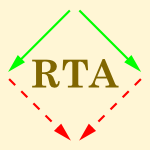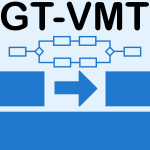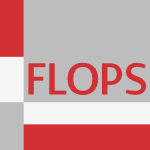185 papers:
 DRR-2015-NagyEKS #category theory #clustering #web
DRR-2015-NagyEKS #category theory #clustering #web- Clustering header categories extracted from web tables (GN, DWE, MSK, SCS).
 ICALP-v2-2015-MichalewskiM #higher-order #logic #monad #quantifier
ICALP-v2-2015-MichalewskiM #higher-order #logic #monad #quantifier- Baire Category Quantifier in Monadic Second Order Logic (HM, MM), pp. 362–374.
 GCM-2015-PeuserH #category theory #composition #graph
GCM-2015-PeuserH #category theory #composition #graph- Attribution of Graphs by Composition of M, N-adhesive Categories (CP, AH), pp. 66–81.
 RecSys-2015-GuoD #approach #bias #category theory
RecSys-2015-GuoD #approach #bias #category theory- Uncovering Systematic Bias in Ratings across Categories: a Bayesian Approach (FG, DBD), pp. 317–320.
 RecSys-2015-KaragiannakisGS #automation #category theory #recommendation
RecSys-2015-KaragiannakisGS #automation #category theory #recommendation- OSMRec Tool for Automatic Recommendation of Categories on Spatial Entities in OpenStreetMap (NK, GG, DS, SA), pp. 337–338.
 SIGIR-2015-LeeCM
SIGIR-2015-LeeCM- Inter-Category Variation in Location Search (CJL, NC, VPM), pp. 863–866.
 LICS-2015-AdamekMUM
LICS-2015-AdamekMUM- Varieties of Languages in a Category (JA, RSRM, HU, SM), pp. 414–425.
 LICS-2015-PaulyB #set
LICS-2015-PaulyB #set- Descriptive Set Theory in the Category of Represented Spaces (AP, MdB), pp. 438–449.
 RTA-2015-ClercM #term rewriting
RTA-2015-ClercM #term rewriting- Presenting a Category Modulo a Rewriting System (FC, SM), pp. 89–105.
 TLCA-2015-CastellanCD #similarity
TLCA-2015-CastellanCD #similarity- Undecidability of Equality in the Free Locally Cartesian Closed Category (SC, PC, PD), pp. 138–152.
 TLCA-2015-HirschowitzHT #type system
TLCA-2015-HirschowitzHT #type system- Wild ω-Categories for the Homotopy Hypothesis in Type Theory (AH, TH, NT), pp. 226–240.
 CSCW-2014-AndreKD #category theory #clustering #synthesis
CSCW-2014-AndreKD #category theory #clustering #synthesis- Crowd synthesis: extracting categories and clusters from complex data (PA, AK, SPD), pp. 989–998.
 DUXU-DP-2014-KramerN #design
DUXU-DP-2014-KramerN #design- Designing with the User in Mind a Cognitive Category Based Design Methodology (JK, SN), pp. 152–163.
 CIKM-2014-GrbovicHKM #category theory #email #how
CIKM-2014-GrbovicHKM #category theory #email #how- How Many Folders Do You Really Need?: Classifying Email into a Handful of Categories (MG, GH, ZSK, YM), pp. 869–878.
 ICPR-2014-LiuWCL #automation #category theory #image #learning
ICPR-2014-LiuWCL #automation #category theory #image #learning- Automatic Image Attribute Selection for Zero-Shot Learning of Object Categories (LL, AW, SC, BCL), pp. 2619–2624.
 ICPR-2014-XuRVL #adaptation #multi
ICPR-2014-XuRVL #adaptation #multi- Cost-Sensitive Structured SVM for Multi-category Domain Adaptation (JX, SR, DV, AML), pp. 3886–3891.
 KDIR-2014-DomeniconiMPS #category theory #classification
KDIR-2014-DomeniconiMPS #category theory #classification- Cross-domain Text Classification through Iterative Refining of Target Categories Representations (GD, GM, RP, CS), pp. 31–42.
 SIGIR-2014-BabbarPGA #approach #classification #distributed #ranking #scalability
SIGIR-2014-BabbarPGA #approach #classification #distributed #ranking #scalability- Re-ranking approach to classification in large-scale power-law distributed category systems (RB, IP, ÉG, MRA), pp. 1059–1062.
 SIGIR-2014-ChenJZBZSY #category theory #recommendation
SIGIR-2014-ChenJZBZSY #category theory #recommendation- Does product recommendation meet its waterloo in unexplored categories?: no, price comes to help (JC, QJ, SZ, SB, LZ, ZS, YY), pp. 667–676.
 SIGIR-2014-ZhangZSLWY #online
SIGIR-2014-ZhangZSLWY #online- Cross-domain and cross-category emotion tagging for comments of online news (YZ, NZ, LS, YL, QW, XY), pp. 627–636.
 LOPSTR-2014-AlvesDF #data access #metamodelling #semantics
LOPSTR-2014-AlvesDF #data access #metamodelling #semantics- Access Control and Obligations in the Category-Based Metamodel: A Rewrite-Based Semantics (SA, AD, MF), pp. 148–163.
 ICDAR-2013-RomeroS #modelling #recognition
ICDAR-2013-RomeroS #modelling #recognition- Category-Based Language Models for Handwriting Recognition of Marriage License Books (VR, JAS), pp. 788–792.
 MSR-2013-SouzaM #category theory #metric #question
MSR-2013-SouzaM #category theory #metric #question- Do software categories impact coupling metrics? (LBLdS, MdAM), pp. 217–220.
 CIAA-J-2012-Oliveira13 #algebra #automaton #category theory #matrix
CIAA-J-2012-Oliveira13 #algebra #automaton #category theory #matrix- Weighted Automata as Coalgebras in Categories of Matrices (JNO), pp. 709–728.
 GT-VMT-2013-KupperKB #category theory
GT-VMT-2013-KupperKB #category theory- Concatenation and other Closure Properties of Recognizable Languages in Adhesive Categories (SK, BK, HJSB).
 CHI-2013-LeahuCM #category theory #how #matter
CHI-2013-LeahuCM #category theory #how #matter- How categories come to matter (LL, MC, WM), pp. 3331–3334.
 CIKM-2013-MirylenkaP #navigation #network #topic #wiki
CIKM-2013-MirylenkaP #navigation #network #topic #wiki- Navigating the topical structure of academic search results via the Wikipedia category network (DM, AP), pp. 891–896.
 FASE-2012-DiskinMC #category theory #query
FASE-2012-DiskinMC #category theory #query- Intermodeling, Queries, and Kleisli Categories (ZD, TSEM, KC), pp. 163–177.
 ICGT-2012-Lowe #algebra #framework #graph grammar #graph transformation
ICGT-2012-Lowe #algebra #framework #graph grammar #graph transformation- Refined Graph Rewriting in Span-Categories — A Framework for Algebraic Graph Transformation (ML), pp. 111–125.
 CSCW-2012-ChoudhuryDN #category theory #classification #twitter
CSCW-2012-ChoudhuryDN #category theory #classification #twitter- Unfolding the event landscape on twitter: classification and exploration of user categories (MDC, ND, MN), pp. 241–244.
 ICEIS-v3-2012-HamadaASO #classification #documentation #taxonomy #using
ICEIS-v3-2012-HamadaASO #classification #documentation #taxonomy #using- A Classification Method of Open-ended Questionnaires using Category-based Dictionary from Sampled Documents (KH, MA, MS, HO), pp. 193–198.
 CIKM-2012-BaeK #classification #effectiveness #recommendation
CIKM-2012-BaeK #classification #effectiveness #recommendation- An effective category classification method based on a language model for question category recommendation on a cQA service (KB, YK), pp. 2255–2258.
 CIKM-2012-ChenHZAHP #category theory #modelling #semantics #visual notation
CIKM-2012-ChenHZAHP #category theory #modelling #semantics #visual notation- Modeling semantic relations between visual attributes and object categories via dirichlet forest prior (XC, XH, ZZ, YA, TH, EKP), pp. 1263–1272.
 CIKM-2012-HwangLKL #on the #performance #recommendation #using
CIKM-2012-HwangLKL #on the #performance #recommendation #using- On using category experts for improving the performance and accuracy in recommender systems (WSH, HJL, SWK, ML), pp. 2355–2358.
 CIKM-2012-KangLC #category theory #predict
CIKM-2012-KangLC #category theory #predict- Predicting primary categories of business listings for local search (CK, JL, YC), pp. 2591–2594.
 CIKM-2012-ZhouCLZ #automation #topic
CIKM-2012-ZhouCLZ #automation #topic- Exploring the existing category hierarchy to automatically label the newly-arising topics in cQA (GZ, LC, KL, JZ), pp. 1647–1651.
 ICPR-2012-BallanBBSSZ #category theory #generative #image #modelling #social
ICPR-2012-BallanBBSSZ #category theory #generative #image #modelling #social- Combining generative and discriminative models for classifying social images from 101 object categories (LB, MB, ADB, AMS, GS, BFZ), pp. 1731–1734.
 ICPR-2012-DaiFZ #detection #mining
ICPR-2012-DaiFZ #detection #mining- Mining sub-categories for object detection (JD, JF, JZ), pp. 3260–3263.
 ICPR-2012-ZhangSSLWTBC #category theory #image #kernel
ICPR-2012-ZhangSSLWTBC #category theory #image #kernel- Spatial graphlet matching kernel for recognizing aerial image categories (LZ, MS, LS, XL, YW, DT, JB, CC), pp. 2813–2816.
 SIGIR-2012-YuanCSLM #approach #data-driven #maintenance
SIGIR-2012-YuanCSLM #approach #data-driven #maintenance- Category hierarchy maintenance: a data-driven approach (QY, GC, AS, CYL, NMT), pp. 791–800.
 LICS-2012-TraytelPB #category theory #composition #data type #higher-order #logic #proving #theorem proving
LICS-2012-TraytelPB #category theory #composition #data type #higher-order #logic #proving #theorem proving- Foundational, Compositional (Co)datatypes for Higher-Order Logic: Category Theory Applied to Theorem Proving (DT, AP, JCB), pp. 596–605.
 ICDAR-2011-KimL #identification #library
ICDAR-2011-KimL #identification #library- Functional-Based Table Category Identification in Digital Library (SK, YL), pp. 1364–1368.
 ICPC-J-2009-PoonTTK11 #category theory #experience #identification #testing
ICPC-J-2009-PoonTTK11 #category theory #experience #identification #testing- Contributions of tester experience and a checklist guideline to the identification of categories and choices for software testing (PLP, THT, SFT, FCK), pp. 141–163.
 CIAA-J-2010-EsikM11 #automaton #simulation
CIAA-J-2010-EsikM11 #automaton #simulation- The Category of Simulations for Weighted Tree Automata (ZÉ, AM), pp. 1845–1859.
 DLT-J-2010-RahulGR11 #category theory #data type
DLT-J-2010-RahulGR11 #category theory #data type- Data Structures for Range-Aggregation over Categories (SR, PG, KSR), pp. 1707–1728.
 AFL-2011-LoeligerN #design #graph #user interface
AFL-2011-LoeligerN #design #graph #user interface- Affordance Graphs for User Interface Design: Application of Category-theoretic Constructs (EAL, CLN), pp. 392–394.
 CIAA-2011-BechetDF #strict
CIAA-2011-BechetDF #strict- Categorial Grammars with Iterated Types form a Strict Hierarchy of k-Valued Languages (DB, AJD, AF), pp. 42–52.
 ICALP-v2-2011-LairdMM #category theory #difference #game studies
ICALP-v2-2011-LairdMM #category theory #difference #game studies- Constructing Differential Categories and Deconstructing Categories of Games (JL, GM, GM), pp. 186–197.
 LATA-2011-Marciniec
LATA-2011-Marciniec- Tarski’s Principle, Categorial Grammars and Learnability (JM), pp. 378–389.
 CEFP-2011-SlodicakMN #category theory #functional #programming
CEFP-2011-SlodicakMN #category theory #functional #programming- Some New Approaches in Functional Programming Based on Categories (VS, PM, VN), pp. 517–532.
 ICFP-2011-HinzeJ #category theory #fixpoint #proving
ICFP-2011-HinzeJ #category theory #fixpoint #proving- Proving the unique fixed-point principle correct: an adventure with category theory (RH, DWHJ), pp. 359–371.
 GCM-2010-HeumullerJKS11 #category theory
GCM-2010-HeumullerJKS11 #category theory- Construction of Pushout Complements in the Category of Hypergraphs (MH, SJ, BK, JS).
 HCI-UA-2011-IshidaNKOT #word
HCI-UA-2011-IshidaNKOT #word- Therapeutic Category Improvement Method Based on the Words Appearing in Effect-Efficacy Description (HI, KN, MK, MO, FT), pp. 174–181.
 ICEIS-v4-2011-LongG #category theory #social
ICEIS-v4-2011-LongG #category theory #social- Social Attributes of Urban Traffic and Its Categories (WL, JG), pp. 581–585.
 CIKM-2011-GyllstromM #category theory #wiki
CIKM-2011-GyllstromM #category theory #wiki- Examining the “leftness” property of Wikipedia categories (KG, MFM), pp. 2309–2312.
 CIKM-2011-LiKL #community
CIKM-2011-LiKL #community- Question routing in community question answering: putting category in its place (BL, IK, MRL), pp. 2041–2044.
 CIKM-2011-UllegaddiV #category theory #learning #query #rank #web
CIKM-2011-UllegaddiV #category theory #learning #query #rank #web- Learning to rank categories for web queries (PU, VV), pp. 2065–2068.
 CIKM-2011-WuXPZHL #concept #wiki
CIKM-2011-WuXPZHL #concept #wiki- Leveraging Wikipedia concept and category information to enhance contextual advertising (ZW, GX, RP, YZ, ZH, JL), pp. 2105–2108.
 CIKM-2011-ZhuCXCT #category theory #ranking #towards
CIKM-2011-ZhuCXCT #category theory #ranking #towards- Towards expert finding by leveraging relevant categories in authority ranking (HZ, HC, HX, EC, JT), pp. 2221–2224.
 CSL-2011-Schwencke #nondeterminism #recursion
CSL-2011-Schwencke #nondeterminism #recursion- A Category Theoretic View of Nondeterministic Recursive Program Schemes (DS), pp. 496–511.
 TLCA-2011-ClairambaultD #category theory
TLCA-2011-ClairambaultD #category theory- The Biequivalence of Locally Cartesian Closed Categories and Martin-Löf Type Theories (PC, PD), pp. 91–106.
 ITiCSE-2010-LeeR #algorithm #category theory #design #learning #visualisation
ITiCSE-2010-LeeR #algorithm #category theory #design #learning #visualisation- Integrating categories of algorithm learning objective into algorithm visualization design: a proposal (MHL, GR), pp. 289–293.
 LATA-2010-FlorencioF #approach #bound #consistency
LATA-2010-FlorencioF #approach #bound #consistency- Finding Consistent Categorial Grammars of Bounded Value: A Parameterized Approach (CCF, HF), pp. 202–213.
 ICGT-2010-BraatzEGG #category theory
ICGT-2010-BraatzEGG #category theory- Finitary M-Adhesive Categories (BB, HE, KG, UG), pp. 234–249.
 ICGT-2010-GolasEH #category theory #multi
ICGT-2010-GolasEH #category theory #multi- Multi-Amalgamation in Adhesive Categories (UG, HE, AH), pp. 346–361.
 ICGT-2010-Lowe #graph grammar
ICGT-2010-Lowe #graph grammar- Graph Rewriting in Span-Categories (ML), pp. 218–233.
 CIKM-2010-KohnckeB #category theory #documentation #using #wiki
CIKM-2010-KohnckeB #category theory #documentation #using #wiki- Using Wikipedia categories for compact representations of chemical documents (BK, WTB), pp. 1809–1812.
 CIKM-2010-MiaoLTZ #approach #category theory #community #identification #modelling #topic
CIKM-2010-MiaoLTZ #approach #category theory #community #identification #modelling #topic- Identifying new categories in community question answering archives: a topic modeling approach (YM, CL, JT, LZ), pp. 1673–1676.
 ECIR-2010-BalogBR #modelling #query
ECIR-2010-BalogBR #modelling #query- Category-Based Query Modeling for Entity Search (KB, MB, MdR), pp. 319–331.
 ICML-2010-ZhuGJRHK #learning #modelling
ICML-2010-ZhuGJRHK #learning #modelling- Cognitive Models of Test-Item Effects in Human Category Learning (XZ, BRG, KSJ, TTR, JH, CK), pp. 1247–1254.
 ICPR-2010-DasKK #detection #multi #optimisation
ICPR-2010-DasKK #detection #multi #optimisation- Sub-Category Optimization for Multi-view Multi-pose Object Detection (DD, YK, YK), pp. 1405–1408.
 ICPR-2010-JhuoL #kernel #learning #multi #recognition
ICPR-2010-JhuoL #kernel #learning #multi #recognition- Boosted Multiple Kernel Learning for Scene Category Recognition (IHJ, DTL), pp. 3504–3507.
 ICPR-2010-VillamizarMAS #category theory #detection #multi #performance #random
ICPR-2010-VillamizarMAS #category theory #detection #multi #performance #random- Shared Random Ferns for Efficient Detection of Multiple Categories (MV, FMN, JAC, AS), pp. 388–391.
 RE-2010-Primrose #category theory #experience #user interface
RE-2010-Primrose #category theory #experience #user interface- User Experience Grading Via Kano Categories (MCP), pp. 331–336.
 SAC-2010-MengleG #category theory #mining
SAC-2010-MengleG #category theory #mining- Mining temporal relationships among categories (SSRM, NG), pp. 1107–1108.
 ICSE-2010-TreudeS10a #category theory #lightweight
ICSE-2010-TreudeS10a #category theory #lightweight- Bridging lightweight and heavyweight task organization: the role of tags in adopting new task categories (CT, MADS), pp. 231–234.
 ESOP-2009-Reynolds #category theory #design #programming language #using
ESOP-2009-Reynolds #category theory #design #programming language #using- Using Category Theory to Design Programming Languages (JCR), pp. 62–63.
 FASE-2009-RutleRLW #approach #formal method #version control
FASE-2009-RutleRLW #approach #formal method #version control- A Category-Theoretical Approach to the Formalisation of Version Control in MDE (AR, AR, YL, UW), pp. 64–78.
 ICPC-2009-HindleGGH #automation #category theory #maintenance #scalability
ICPC-2009-HindleGGH #automation #category theory #maintenance #scalability- Automatic classication of large changes into maintenance categories (AH, DMG, MWG, RCH), pp. 30–39.
 CHI-2009-KitturCS #topic #using #what #wiki
CHI-2009-KitturCS #topic #using #what #wiki- What’s in Wikipedia?: mapping topics and conflict using socially annotated category structure (AK, EHC, BS), pp. 1509–1512.
 CIKM-2009-SunLL #case study #category theory #classification #performance #predict #what
CIKM-2009-SunLL #case study #category theory #classification #performance #predict #what- What makes categories difficult to classify?: a study on predicting classification performance for categories (AS, EPL, YL), pp. 1891–1894.
 KDD-2009-VatturiW #detection #using
KDD-2009-VatturiW #detection #using- Category detection using hierarchical mean shift (PV, WKW), pp. 847–856.
 SIGIR-2009-KapteinKK #ad hoc #category theory #using #wiki
SIGIR-2009-KapteinKK #ad hoc #category theory #using #wiki- Using wikipedia categories for ad hoc search (RK, MK, JK), pp. 824–825.
 SAC-2009-PlattMG #classification #detection #topic
SAC-2009-PlattMG #classification #detection #topic- Improving classification based off-topic search detection via category relationships (AP, SSRM, NG), pp. 869–874.
 GTTSE-2009-Diskin #category theory
GTTSE-2009-Diskin #category theory- Model Synchronization: Mappings, Tiles, and Categories (ZD), pp. 92–165.
 CSL-2009-CockettS #communication #on the #problem #word
CSL-2009-CockettS #communication #on the #problem #word- On the Word Problem for ΣΠ-Categories, and the Properties of Two-Way Communication (JRBC, LS), pp. 194–208.
 TLCA-2009-Lumsdaine #type system
TLCA-2009-Lumsdaine #type system- Weak ω-Categories from Intensional Type Theory (PLL), pp. 172–187.
 ICGT-2008-Heindel #category theory #morphism
ICGT-2008-Heindel #category theory #morphism- Grammar Morphisms and Weakly Adhesive Categories (TH), pp. 493–495.
 ECIR-2008-AltingovdeCU #performance #query #strict #web
ECIR-2008-AltingovdeCU #performance #query #strict #web- Efficient Processing of Category-Restricted Queries for Web Directories (ISA, FC, ÖU), pp. 695–699.
 ECIR-2008-DemartiniCBN #category theory #ranking #web
ECIR-2008-DemartiniCBN #category theory #ranking #web- Ranking Categories for Web Search (GD, PAC, IB, WN), pp. 564–569.
 ECIR-2008-LinC #category theory #evolution #network #social
ECIR-2008-LinC #category theory #evolution #network #social- Labeling Categories and Relationships in an Evolving Social Network (MSL, HHC), pp. 77–88.
 SAC-2008-MengleGP #category theory #classification #using
SAC-2008-MengleGP #category theory #classification #using- Discovering relationships among categories using misclassification information (SSRM, NG, AP), pp. 932–937.
 MSR-2007-KimE #category theory
MSR-2007-KimE #category theory- Prioritizing Warning Categories by Analyzing Software History (SK, MDE), p. 27.
 LATA-2007-Thorne #bound #finite
LATA-2007-Thorne #bound #finite- Categorial Module Grammars of Bounded Size have Finite Bounded Density (CT), pp. 577–588.
 CIKM-2007-YuTT #category theory #evaluation #ontology #using #wiki
CIKM-2007-YuTT #category theory #evaluation #ontology #using #wiki- Ontology evaluation using wikipedia categories for browsing (JY, JAT, AMT), pp. 223–232.
 SIGIR-2007-StaffB #automation #category theory #classification #web
SIGIR-2007-StaffB #automation #category theory #classification #web- Automatic classification of web pages into bookmark categories (CS, IB), pp. 731–732.
 SAC-2007-HwangY #mining #ranking
SAC-2007-HwangY #mining #ranking- Mining and processing category ranking (SwH, HY), pp. 441–442.
 DocEng-2006-Ruiz-RicoGR #automation #feature model #named #ranking
DocEng-2006-Ruiz-RicoGR #automation #feature model #named #ranking- NEWPAR: an automatic feature selection and weighting schema for category ranking (FRR, JLVG, MCRS), pp. 128–137.
 ICML-2006-RendersGGPC #categorisation #multi
ICML-2006-RendersGGPC #categorisation #multi- Categorization in multiple category systems (JMR, ÉG, CG, FP, GC), pp. 745–752.
 IJCAR-2006-KozenKR #automation #category theory #proving
IJCAR-2006-KozenKR #automation #category theory #proving- Automating Proofs in Category Theory (DK, CK, ER), pp. 392–407.
 FoSSaCS-2005-Fahrenberg #automaton
FoSSaCS-2005-Fahrenberg #automaton- A Category of Higher-Dimensional Automata (UF), pp. 187–201.
 ICSM-2005-NiuES #approach
ICSM-2005-NiuES #approach- A Category-theoretic Approach to Syntactic Software Merging (NN, SME, MS), pp. 197–206.
 CIAA-2005-Tellier #automaton
CIAA-2005-Tellier #automaton- Automata and AB-Categorial Grammars (IT), pp. 353–355.
 CHI-2005-Kaki #category theory #documentation #named #ranking
CHI-2005-Kaki #category theory #documentation #named #ranking- Findex: search result categories help users when document ranking fails (MK), pp. 131–140.
 ICML-2005-JinCS #information retrieval #using
ICML-2005-JinCS #information retrieval #using- Learn to weight terms in information retrieval using category information (RJ, JYC, LS), pp. 353–360.
 ICML-2005-RousuSSS #classification #learning #modelling #multi
ICML-2005-RousuSSS #classification #learning #modelling #multi- Learning hierarchical multi-category text classification models (JR, CS, SS, JST), pp. 744–751.
 LICS-2005-LamarcheS #category theory
LICS-2005-LamarcheS #category theory- Constructing Free Boolean Categories (FL, LS), pp. 209–218.
 FoSSaCS-2004-GianantonioM #category theory #recursion
FoSSaCS-2004-GianantonioM #category theory #recursion- Unifying Recursive and Co-recursive Definitions in Sheaf Categories (PDG, MM), pp. 136–150.
 FoSSaCS-2004-LackS #category theory
FoSSaCS-2004-LackS #category theory- Adhesive Categories (SL, PS), pp. 273–288.
 ICGT-2004-EhrigHPP #category theory
ICGT-2004-EhrigHPP #category theory- Adhesive High-Level Replacement Categories and Systems (HE, AH, JP, UP), pp. 144–160.
 ICPR-v2-2004-TanakaSO #image #multi #retrieval
ICPR-v2-2004-TanakaSO #image #multi #retrieval- Retrieval Method for Multi-category Images (HT, HS, SO), pp. 965–968.
 KDD-2004-ZhangZK #approach #category theory #data mining #image #mining #modelling
KDD-2004-ZhangZK #approach #category theory #data mining #image #mining #modelling- A data mining approach to modeling relationships among categories in image collection (RZ, Z(Z, SK), pp. 749–754.
 CAV-2004-BarrettB #implementation
CAV-2004-BarrettB #implementation- CVC Lite: A New Implementation of the Cooperating Validity Checker Category B (CWB, SB), pp. 515–518.
 ASE-2003-SabetzadehE #analysis #approach #consistency #graph #nondeterminism
ASE-2003-SabetzadehE #analysis #approach #consistency #graph #nondeterminism- Analysis of Inconsistency in Graph-Based Viewpoints: A Category-Theoretic Approach (MS, SME), pp. 12–21.
 ICDAR-2003-Mori #feature model #recognition #using #video
ICDAR-2003-Mori #feature model #recognition #using #video- Video text recognition using feature compensation as category-dependent feature extraction (MM), pp. 645–649.
 FoSSaCS-2003-AbbottAG #category theory
FoSSaCS-2003-AbbottAG #category theory- Categories of Containers (MA, TA, NG), pp. 23–38.
 FoSSaCS-2003-SassoneS #bisimulation
FoSSaCS-2003-SassoneS #bisimulation- Deriving Bisimulation Congruences: 2-Categories Vs Precategories (VS, PS), pp. 409–424.
 ICALP-2003-ChattopadhyayT #category theory #commutative
ICALP-2003-ChattopadhyayT #category theory #commutative- Locally Commutative Categories (AC, DT), pp. 984–995.
 ICALP-2003-Doberkat #bisimulation #category theory #probability
ICALP-2003-Doberkat #bisimulation #category theory #probability- Semi-pullbacks and Bisimulations in Categories of Stochastic Relations (EED), pp. 996–1007.
 CIKM-2003-BeitzelJCG #automation #evaluation #taxonomy #using
CIKM-2003-BeitzelJCG #automation #evaluation #taxonomy #using- Using titles and category names from editor-driven taxonomies for automatic evaluation (SMB, ECJ, AC, DAG), pp. 17–23.
 CAV-2003-MouraRS #bound #induction #model checking #verification
CAV-2003-MouraRS #bound #induction #model checking #verification- Bounded Model Checking and Induction: From Refutation to Verification (Extended Abstract, Category A) (LMdM, HR, MS), pp. 14–26.
 TLCA-2003-KakutaniH #category theory #fixpoint
TLCA-2003-KakutaniH #category theory #fixpoint- Parameterizations and Fixed-Point Operators on Control Categories (YK, MH), pp. 180–194.
 CIKM-2002-LiuYM #category theory #personalisation #query #web
CIKM-2002-LiuYM #category theory #personalisation #query #web- Personalized web search by mapping user queries to categories (FL, CTY, WM), pp. 558–565.
 ICPR-v2-2002-OjalaAM #category theory #empirical #evaluation #image #retrieval #semantics
ICPR-v2-2002-OjalaAM #category theory #empirical #evaluation #image #retrieval #semantics- Empirical Evaluation of MPEG-7 XM Color Descriptors in Content-Based Retrieval of Semantic Image Categories (TO, MA, EM), pp. 1021–1024.
 ICPR-v3-2002-GreenspanGG #category theory #generative #image #modelling #probability
ICPR-v3-2002-GreenspanGG #category theory #generative #image #modelling #probability- Probabilistic Models for Generating, Modelling and Matching Image Categories (HG, SG, JG), pp. 970–973.
 ICPR-v3-2002-MoriSH #feature model #recognition
ICPR-v3-2002-MoriSH #feature model #recognition- Category-Dependent Feature Extraction for Recognition of Degraded Handwritten Characters (MM, MS, NH), pp. 155–159.
 KDD-2002-UedaS #category theory #detection #modelling #multi #parametricity #using
KDD-2002-UedaS #category theory #detection #modelling #multi #parametricity #using- Single-shot detection of multiple categories of text using parametric mixture models (NU, KS), pp. 626–631.
 SIGIR-2002-ChenLS #predict
SIGIR-2002-ChenLS #predict- Predicting category accesses for a user in a structured information space (MC, ASL, JPS), pp. 65–72.
 SIGIR-2002-CrammerS #algorithm #online #product line #ranking
SIGIR-2002-CrammerS #algorithm #online #product line #ranking- A new family of online algorithms for category ranking (KC, YS), pp. 151–158.
 SIGIR-2002-KouG #algorithm #classification
SIGIR-2002-KouG #algorithm #classification- Study of category score algorithms for k-NN classifier (HK, GG), pp. 393–394.
 ICDAR-2001-ChaS #algorithm #analysis #classification
ICDAR-2001-ChaS #algorithm #analysis #classification- Apriori Algorithm for Sub-category Classification Analysis of Handwriting (SHC, SNS), pp. 1022–1025.
 FoSSaCS-2001-KrsticLP #algebra #category theory #process
FoSSaCS-2001-KrsticLP #algebra #category theory #process- Categories of Processes Enriched in Final Coalgebras (SK, JL, DP), pp. 303–317.
 ICEIS-v2-2001-JohnsonD #category theory #enterprise #information management #modelling #specification #using
ICEIS-v2-2001-JohnsonD #category theory #enterprise #information management #modelling #specification #using- Enterprise Information Systems: Specifying the Links among Project Data Models Using Category Theory (MJ, CNGD), pp. 619–626.
 TLCA-2001-Haghverdi #category theory #linear #logic #modelling
TLCA-2001-Haghverdi #category theory #linear #logic #modelling- Partially Additive Categories and Fully Complete Models of Linear Logic (EH), pp. 197–216.
 ASE-1999-WilliamsonH #category theory #industrial #synthesis
ASE-1999-WilliamsonH #category theory #industrial #synthesis- Industrial Applications of Software Synthesis via Category Theory (KEW, MH), pp. 35–43.
 ICALP-1999-PowerT
ICALP-1999-PowerT- Closed Freyd- and κ-categories (JP, HT), pp. 625–634.
 CIKM-1999-LabrouF #category theory #documentation #exclamation #ontology #using
CIKM-1999-LabrouF #category theory #documentation #exclamation #ontology #using- Yahoo! As an Ontology: Using Yahoo! Categories to Describe Documents (YL, TWF), pp. 180–187.
 SIGIR-1999-HoenkampSS #category theory #retrieval
SIGIR-1999-HoenkampSS #category theory #retrieval- Supporting Content Retrieval from WWW via “Basic Level Categories” (poster abstract) (EH, OS, LS), pp. 311–312.
 CADE-1999-Groote #approach #deduction #programming
CADE-1999-Groote #approach #deduction #programming- A dynamic programming approach to categorial deduction (PdG), pp. 1–15.
 LICS-1999-BruniM #category theory #π-calculus
LICS-1999-BruniM #category theory #π-calculus- Cartesian Closed Double Categories, Their λ-Notation, and the π-Calculus (RB, UM), pp. 246–265.
 LICS-1999-Simpson #axiom #category theory
LICS-1999-Simpson #axiom #category theory- Elementary Axioms for Categories of Classes (AKS), pp. 77–85.
 ASE-1998-WielsE #category theory #evolution #specification #using
ASE-1998-WielsE #category theory #evolution #specification #using- Management of Evolving Specifications using Category Theory (VW, SME), pp. 12–21.
 FoSSaCS-1998-Moggi #category theory
FoSSaCS-1998-Moggi #category theory- Functor Categories and Two-Level Languages (EM), pp. 211–225.
 FLOPS-1998-Sakurai #proving
FLOPS-1998-Sakurai #proving- Categorial Model Construction for Proving Syntactic Properties (TS), pp. 187–206.
 EDOC-1998-KoistinenS #distributed #multi
EDOC-1998-KoistinenS #distributed #multi- Worth-based multi-category quality-of-service negotiation in distributed object infrastructures (JK, AS), pp. 239–249.
 ALP-PLILP-1998-LiptonM #constraints #encapsulation #logic programming
ALP-PLILP-1998-LiptonM #constraints #encapsulation #logic programming- Encapsulating Data in Logic Programming via Categorial Constraints (JL, RM), pp. 391–410.
 LICS-1998-BirkedalCRS #category theory #type system
LICS-1998-BirkedalCRS #category theory #type system- Type Theory via Exact Categories (LB, AC, GR, DSS), pp. 188–198.
 LICS-1998-JohnstonePTWW #algebra #axiom #category theory
LICS-1998-JohnstonePTWW #algebra #axiom #category theory- An Axiomatics for Categories of Transition Systems as Coalgebras (PJ, JP, TT, HW, JW), pp. 207–213.
 SIGIR-1997-HearstK #interactive #interface #named #retrieval #scalability #specification #using
SIGIR-1997-HearstK #interactive #interface #named #retrieval #scalability #specification #using- Cat-a-Cone: An Interactive Interface for Specifying Searches and Viewing Retrieval Results using a Large Category Hierarchy (MAH, CK), pp. 246–255.
 CSL-1997-Power #algebra #category theory
CSL-1997-Power #algebra #category theory- Categories with Algebraic Structure (AJP), pp. 389–405.
 TLCA-1997-Hasegawa #category theory #modelling #recursion #λ-calculus
TLCA-1997-Hasegawa #category theory #modelling #recursion #λ-calculus- Recursion from Cyclic Sharing: Traced Monoidal Categories and Models of Cyclic λ Calculi (MH), pp. 196–213.
 RWLW-1996-Miyoshi #category theory #logic #modelling
RWLW-1996-Miyoshi #category theory #logic #modelling- Modelling conditional rewriting logic in structured categories (HM), pp. 20–34.
 CADE-1996-Luz-Filho #logic #proving #specification #theorem proving
CADE-1996-Luz-Filho #logic #proving #specification #theorem proving- Grammar Specification in Categorial Logics and Theorem Proving (SFLF), pp. 703–717.
 ICALP-1995-FortnowFGKKSS #learning
ICALP-1995-FortnowFGKKSS #learning- Measure, Category and Learning Theory (LF, RF, WIG, MK, SAK, CHS, FS), pp. 558–569.
 ICML-1995-Quinlan
ICML-1995-Quinlan- MDL and Categorial Theories (Continued) (JRQ), pp. 464–470.
 SIGIR-1995-IwayamaT #categorisation #clustering #comparison
SIGIR-1995-IwayamaT #categorisation #clustering #comparison- Cluster-Based Text Categorization: A Comparison of Category Search Strategies (MI, TT), pp. 273–280.
 POPL-1995-Reynolds #category theory #using
POPL-1995-Reynolds #category theory #using- Using Functor Categories to Generate Intermediate Code (JCR), pp. 25–36.
 RTA-1995-CorradiniGM #modelling #term rewriting
RTA-1995-CorradiniGM #modelling #term rewriting- Relating Two Categorial Models of Term Rewriting (AC, FG, UM), pp. 225–240.
 TAGT-1994-Bauderon #approach #generative #graph #infinity
TAGT-1994-Bauderon #approach #generative #graph #infinity- A Category-Theoretical Approach to Vertex Replacement: The Generation of Infinite Graphs (MB), pp. 27–37.
 TAGT-1994-CorradiniELMP #category theory #graph grammar
TAGT-1994-CorradiniELMP #category theory #graph grammar- The Category of Typed Graph Grammars and its Adjunctions with Categories (AC, HE, ML, UM, JP), pp. 56–74.
 CAiSE-1994-Odberg #classification #database #evolution #flexibility #object-oriented
CAiSE-1994-Odberg #classification #database #evolution #flexibility #object-oriented- Category Classes: Flexible Classification and Evolution in Object-Oriented Databases (EO), pp. 406–420.
 KR-1994-GuarinoCG #category theory #ontology
KR-1994-GuarinoCG #category theory #ontology- An Ontology of Meta-Level Categories (NG, MC, PG), pp. 270–280.
 SAC-1994-LiB #object-oriented #parsing #unification
SAC-1994-LiB #object-oriented #parsing #unification- An integrated parsing scheme for unification categorial grammar with object-oriented lexicon (LL, BRB), pp. 524–528.
 LICS-1994-BrownH #category theory #design
LICS-1994-BrownH #category theory #design- Categories, Allegories and Circuit Design (CB, GH), pp. 372–381.
 ICALP-1993-BrownG #category theory #logic #petri net
ICALP-1993-BrownG #category theory #logic #petri net- Temporal Logic and Categories of Petri Nets (CB, DG), pp. 570–581.
 RTA-1993-Dougherty #λ-calculus
RTA-1993-Dougherty #λ-calculus- Some λ Calculi with Categorial Sums and Products (DJD), pp. 137–151.
 ICALP-1992-PhoaF #ml #semantics
ICALP-1992-PhoaF #ml #semantics- A Proposed Categorial Semantics for Pure ML (WP, MPF), pp. 533–544.
 PLILP-1992-Muck #automaton #functional #logic programming #named #source code
PLILP-1992-Muck #automaton #functional #logic programming #named #source code- CAMEL: An Extension of the Categorial Abstract Machine to Compile Functional/Logic Programs (AM), pp. 341–354.
 CSL-1992-BentonBPH #linear #modelling #revisited #λ-calculus
CSL-1992-BentonBPH #linear #modelling #revisited #λ-calculus- Linear λ-Calculus and Categorial Models Revisited (PNB, GMB, VdP, MH), pp. 61–84.
 LICS-1992-Saraswat #constraints
LICS-1992-Saraswat #constraints- The Category of Constraint Systems is Cartesian-Closed (VAS), pp. 341–345.
 STOC-1991-Shapiro #category theory #concurrent
STOC-1991-Shapiro #category theory #concurrent- Separating Concurrent Languages with Categories of Language Embeddings (Extended Abstract) (EYS), pp. 198–208.
 ML-1991-MartinB #bias #learning #variability
ML-1991-MartinB #bias #learning #variability- Variability Bias and Category Learning (JDM, DB), pp. 90–94.
 ML-1991-OurstonM #multi
ML-1991-OurstonM #multi- Improving Shared Rules in Multiple Category Domain Theories (DO, RJM), pp. 534–538.
 GG-1990-Kennaway #category theory #graph grammar #morphism
GG-1990-Kennaway #category theory #graph grammar #morphism- Graph Rewriting in Some Categories of Partial Morphisms (RK), pp. 490–504.
 CADE-1990-AltucherP #category theory #proving
CADE-1990-AltucherP #category theory #proving- A Mechanically Assisted Constructive Proof in Category Theory (JAA, PP), pp. 500–513.
 JICSCP-1988-Hemmendinger88 #compilation #semantics
JICSCP-1988-Hemmendinger88 #compilation #semantics- A Compiler and Semantic Analyzer Based on Categorial Grammar (DH), pp. 1474–1489.
 LICS-1988-Coquand #category theory
LICS-1988-Coquand #category theory- Categories of Embeddings (TC), pp. 256–263.
 LICS-1988-Winskel #composition #petri net #proving
LICS-1988-Winskel #composition #petri net #proving- A Category of Labelled Petri Nets and Compositional Proof System (Extended Abstract) (GW), pp. 142–154.
 PODS-1987-Malvestuto #database #query
PODS-1987-Malvestuto #database #query- Answering Queries in Categorial Data Bases (FMM), pp. 87–96.
 CSL-1987-GermanoM #category theory #diagrams
CSL-1987-GermanoM #category theory #diagrams- Loose Diagrams, Semigroupoids, Categories, Groupoids and Iteration (GG, SM), pp. 64–80.
 CADE-1986-Lins #combinator #execution
CADE-1986-Lins #combinator #execution- A New Formula for the Execution of Categorial Combinators (RDL), pp. 89–98.
 LICS-1986-Gunter #axiom
LICS-1986-Gunter #axiom- The Largest First-Order-Axiomatizable Cartesian Closed Category of Domains (CAG), pp. 142–148.
 ICALP-1980-Smyth #category theory
ICALP-1980-Smyth #category theory- Computability in Categories (MBS), pp. 609–620.
 SDCG-1980-Reynolds #category theory #design #using
SDCG-1980-Reynolds #category theory #design #using- Using category theory to design implicit conversions and generic operators (JCR), pp. 211–258.
 VLDB-1978-Kleefstra #database
VLDB-1978-Kleefstra #database- Data Base Description with a Single Name Category Data Model (WJK), pp. 177–185.
 DRR-2015-NagyEKS #category theory #clustering #web
DRR-2015-NagyEKS #category theory #clustering #web ICALP-v2-2015-MichalewskiM #higher-order #logic #monad #quantifier
ICALP-v2-2015-MichalewskiM #higher-order #logic #monad #quantifier GCM-2015-PeuserH #category theory #composition #graph
GCM-2015-PeuserH #category theory #composition #graph RecSys-2015-GuoD #approach #bias #category theory
RecSys-2015-GuoD #approach #bias #category theory RecSys-2015-KaragiannakisGS #automation #category theory #recommendation
RecSys-2015-KaragiannakisGS #automation #category theory #recommendation SIGIR-2015-LeeCM
SIGIR-2015-LeeCM LICS-2015-AdamekMUM
LICS-2015-AdamekMUM LICS-2015-PaulyB #set
LICS-2015-PaulyB #set RTA-2015-ClercM #term rewriting
RTA-2015-ClercM #term rewriting TLCA-2015-CastellanCD #similarity
TLCA-2015-CastellanCD #similarity TLCA-2015-HirschowitzHT #type system
TLCA-2015-HirschowitzHT #type system CSCW-2014-AndreKD #category theory #clustering #synthesis
CSCW-2014-AndreKD #category theory #clustering #synthesis DUXU-DP-2014-KramerN #design
DUXU-DP-2014-KramerN #design CIKM-2014-GrbovicHKM #category theory #email #how
CIKM-2014-GrbovicHKM #category theory #email #how ICPR-2014-LiuWCL #automation #category theory #image #learning
ICPR-2014-LiuWCL #automation #category theory #image #learning ICPR-2014-XuRVL #adaptation #multi
ICPR-2014-XuRVL #adaptation #multi KDIR-2014-DomeniconiMPS #category theory #classification
KDIR-2014-DomeniconiMPS #category theory #classification SIGIR-2014-BabbarPGA #approach #classification #distributed #ranking #scalability
SIGIR-2014-BabbarPGA #approach #classification #distributed #ranking #scalability SIGIR-2014-ChenJZBZSY #category theory #recommendation
SIGIR-2014-ChenJZBZSY #category theory #recommendation SIGIR-2014-ZhangZSLWY #online
SIGIR-2014-ZhangZSLWY #online LOPSTR-2014-AlvesDF #data access #metamodelling #semantics
LOPSTR-2014-AlvesDF #data access #metamodelling #semantics ICDAR-2013-RomeroS #modelling #recognition
ICDAR-2013-RomeroS #modelling #recognition MSR-2013-SouzaM #category theory #metric #question
MSR-2013-SouzaM #category theory #metric #question CIAA-J-2012-Oliveira13 #algebra #automaton #category theory #matrix
CIAA-J-2012-Oliveira13 #algebra #automaton #category theory #matrix GT-VMT-2013-KupperKB #category theory
GT-VMT-2013-KupperKB #category theory CHI-2013-LeahuCM #category theory #how #matter
CHI-2013-LeahuCM #category theory #how #matter CIKM-2013-MirylenkaP #navigation #network #topic #wiki
CIKM-2013-MirylenkaP #navigation #network #topic #wiki FASE-2012-DiskinMC #category theory #query
FASE-2012-DiskinMC #category theory #query ICGT-2012-Lowe #algebra #framework #graph grammar #graph transformation
ICGT-2012-Lowe #algebra #framework #graph grammar #graph transformation CSCW-2012-ChoudhuryDN #category theory #classification #twitter
CSCW-2012-ChoudhuryDN #category theory #classification #twitter ICEIS-v3-2012-HamadaASO #classification #documentation #taxonomy #using
ICEIS-v3-2012-HamadaASO #classification #documentation #taxonomy #using CIKM-2012-BaeK #classification #effectiveness #recommendation
CIKM-2012-BaeK #classification #effectiveness #recommendation CIKM-2012-ChenHZAHP #category theory #modelling #semantics #visual notation
CIKM-2012-ChenHZAHP #category theory #modelling #semantics #visual notation CIKM-2012-HwangLKL #on the #performance #recommendation #using
CIKM-2012-HwangLKL #on the #performance #recommendation #using CIKM-2012-KangLC #category theory #predict
CIKM-2012-KangLC #category theory #predict CIKM-2012-ZhouCLZ #automation #topic
CIKM-2012-ZhouCLZ #automation #topic ICPR-2012-BallanBBSSZ #category theory #generative #image #modelling #social
ICPR-2012-BallanBBSSZ #category theory #generative #image #modelling #social ICPR-2012-DaiFZ #detection #mining
ICPR-2012-DaiFZ #detection #mining ICPR-2012-ZhangSSLWTBC #category theory #image #kernel
ICPR-2012-ZhangSSLWTBC #category theory #image #kernel SIGIR-2012-YuanCSLM #approach #data-driven #maintenance
SIGIR-2012-YuanCSLM #approach #data-driven #maintenance LICS-2012-TraytelPB #category theory #composition #data type #higher-order #logic #proving #theorem proving
LICS-2012-TraytelPB #category theory #composition #data type #higher-order #logic #proving #theorem proving ICDAR-2011-KimL #identification #library
ICDAR-2011-KimL #identification #library ICPC-J-2009-PoonTTK11 #category theory #experience #identification #testing
ICPC-J-2009-PoonTTK11 #category theory #experience #identification #testing CIAA-J-2010-EsikM11 #automaton #simulation
CIAA-J-2010-EsikM11 #automaton #simulation DLT-J-2010-RahulGR11 #category theory #data type
DLT-J-2010-RahulGR11 #category theory #data type AFL-2011-LoeligerN #design #graph #user interface
AFL-2011-LoeligerN #design #graph #user interface CIAA-2011-BechetDF #strict
CIAA-2011-BechetDF #strict ICALP-v2-2011-LairdMM #category theory #difference #game studies
ICALP-v2-2011-LairdMM #category theory #difference #game studies LATA-2011-Marciniec
LATA-2011-Marciniec CEFP-2011-SlodicakMN #category theory #functional #programming
CEFP-2011-SlodicakMN #category theory #functional #programming ICFP-2011-HinzeJ #category theory #fixpoint #proving
ICFP-2011-HinzeJ #category theory #fixpoint #proving GCM-2010-HeumullerJKS11 #category theory
GCM-2010-HeumullerJKS11 #category theory HCI-UA-2011-IshidaNKOT #word
HCI-UA-2011-IshidaNKOT #word ICEIS-v4-2011-LongG #category theory #social
ICEIS-v4-2011-LongG #category theory #social CIKM-2011-GyllstromM #category theory #wiki
CIKM-2011-GyllstromM #category theory #wiki CIKM-2011-LiKL #community
CIKM-2011-LiKL #community CIKM-2011-UllegaddiV #category theory #learning #query #rank #web
CIKM-2011-UllegaddiV #category theory #learning #query #rank #web CIKM-2011-WuXPZHL #concept #wiki
CIKM-2011-WuXPZHL #concept #wiki CIKM-2011-ZhuCXCT #category theory #ranking #towards
CIKM-2011-ZhuCXCT #category theory #ranking #towards CSL-2011-Schwencke #nondeterminism #recursion
CSL-2011-Schwencke #nondeterminism #recursion TLCA-2011-ClairambaultD #category theory
TLCA-2011-ClairambaultD #category theory ITiCSE-2010-LeeR #algorithm #category theory #design #learning #visualisation
ITiCSE-2010-LeeR #algorithm #category theory #design #learning #visualisation LATA-2010-FlorencioF #approach #bound #consistency
LATA-2010-FlorencioF #approach #bound #consistency ICGT-2010-BraatzEGG #category theory
ICGT-2010-BraatzEGG #category theory ICGT-2010-GolasEH #category theory #multi
ICGT-2010-GolasEH #category theory #multi ICGT-2010-Lowe #graph grammar
ICGT-2010-Lowe #graph grammar CIKM-2010-KohnckeB #category theory #documentation #using #wiki
CIKM-2010-KohnckeB #category theory #documentation #using #wiki CIKM-2010-MiaoLTZ #approach #category theory #community #identification #modelling #topic
CIKM-2010-MiaoLTZ #approach #category theory #community #identification #modelling #topic ECIR-2010-BalogBR #modelling #query
ECIR-2010-BalogBR #modelling #query ICML-2010-ZhuGJRHK #learning #modelling
ICML-2010-ZhuGJRHK #learning #modelling ICPR-2010-DasKK #detection #multi #optimisation
ICPR-2010-DasKK #detection #multi #optimisation ICPR-2010-JhuoL #kernel #learning #multi #recognition
ICPR-2010-JhuoL #kernel #learning #multi #recognition ICPR-2010-VillamizarMAS #category theory #detection #multi #performance #random
ICPR-2010-VillamizarMAS #category theory #detection #multi #performance #random RE-2010-Primrose #category theory #experience #user interface
RE-2010-Primrose #category theory #experience #user interface SAC-2010-MengleG #category theory #mining
SAC-2010-MengleG #category theory #mining ICSE-2010-TreudeS10a #category theory #lightweight
ICSE-2010-TreudeS10a #category theory #lightweight ESOP-2009-Reynolds #category theory #design #programming language #using
ESOP-2009-Reynolds #category theory #design #programming language #using FASE-2009-RutleRLW #approach #formal method #version control
FASE-2009-RutleRLW #approach #formal method #version control ICPC-2009-HindleGGH #automation #category theory #maintenance #scalability
ICPC-2009-HindleGGH #automation #category theory #maintenance #scalability CHI-2009-KitturCS #topic #using #what #wiki
CHI-2009-KitturCS #topic #using #what #wiki CIKM-2009-SunLL #case study #category theory #classification #performance #predict #what
CIKM-2009-SunLL #case study #category theory #classification #performance #predict #what KDD-2009-VatturiW #detection #using
KDD-2009-VatturiW #detection #using SIGIR-2009-KapteinKK #ad hoc #category theory #using #wiki
SIGIR-2009-KapteinKK #ad hoc #category theory #using #wiki SAC-2009-PlattMG #classification #detection #topic
SAC-2009-PlattMG #classification #detection #topic GTTSE-2009-Diskin #category theory
GTTSE-2009-Diskin #category theory CSL-2009-CockettS #communication #on the #problem #word
CSL-2009-CockettS #communication #on the #problem #word TLCA-2009-Lumsdaine #type system
TLCA-2009-Lumsdaine #type system ICGT-2008-Heindel #category theory #morphism
ICGT-2008-Heindel #category theory #morphism ECIR-2008-AltingovdeCU #performance #query #strict #web
ECIR-2008-AltingovdeCU #performance #query #strict #web ECIR-2008-DemartiniCBN #category theory #ranking #web
ECIR-2008-DemartiniCBN #category theory #ranking #web ECIR-2008-LinC #category theory #evolution #network #social
ECIR-2008-LinC #category theory #evolution #network #social SAC-2008-MengleGP #category theory #classification #using
SAC-2008-MengleGP #category theory #classification #using MSR-2007-KimE #category theory
MSR-2007-KimE #category theory LATA-2007-Thorne #bound #finite
LATA-2007-Thorne #bound #finite CIKM-2007-YuTT #category theory #evaluation #ontology #using #wiki
CIKM-2007-YuTT #category theory #evaluation #ontology #using #wiki SIGIR-2007-StaffB #automation #category theory #classification #web
SIGIR-2007-StaffB #automation #category theory #classification #web SAC-2007-HwangY #mining #ranking
SAC-2007-HwangY #mining #ranking DocEng-2006-Ruiz-RicoGR #automation #feature model #named #ranking
DocEng-2006-Ruiz-RicoGR #automation #feature model #named #ranking ICML-2006-RendersGGPC #categorisation #multi
ICML-2006-RendersGGPC #categorisation #multi IJCAR-2006-KozenKR #automation #category theory #proving
IJCAR-2006-KozenKR #automation #category theory #proving FoSSaCS-2005-Fahrenberg #automaton
FoSSaCS-2005-Fahrenberg #automaton ICSM-2005-NiuES #approach
ICSM-2005-NiuES #approach CIAA-2005-Tellier #automaton
CIAA-2005-Tellier #automaton CHI-2005-Kaki #category theory #documentation #named #ranking
CHI-2005-Kaki #category theory #documentation #named #ranking ICML-2005-JinCS #information retrieval #using
ICML-2005-JinCS #information retrieval #using ICML-2005-RousuSSS #classification #learning #modelling #multi
ICML-2005-RousuSSS #classification #learning #modelling #multi LICS-2005-LamarcheS #category theory
LICS-2005-LamarcheS #category theory FoSSaCS-2004-GianantonioM #category theory #recursion
FoSSaCS-2004-GianantonioM #category theory #recursion FoSSaCS-2004-LackS #category theory
FoSSaCS-2004-LackS #category theory ICGT-2004-EhrigHPP #category theory
ICGT-2004-EhrigHPP #category theory ICPR-v2-2004-TanakaSO #image #multi #retrieval
ICPR-v2-2004-TanakaSO #image #multi #retrieval KDD-2004-ZhangZK #approach #category theory #data mining #image #mining #modelling
KDD-2004-ZhangZK #approach #category theory #data mining #image #mining #modelling CAV-2004-BarrettB #implementation
CAV-2004-BarrettB #implementation ASE-2003-SabetzadehE #analysis #approach #consistency #graph #nondeterminism
ASE-2003-SabetzadehE #analysis #approach #consistency #graph #nondeterminism ICDAR-2003-Mori #feature model #recognition #using #video
ICDAR-2003-Mori #feature model #recognition #using #video FoSSaCS-2003-AbbottAG #category theory
FoSSaCS-2003-AbbottAG #category theory FoSSaCS-2003-SassoneS #bisimulation
FoSSaCS-2003-SassoneS #bisimulation ICALP-2003-ChattopadhyayT #category theory #commutative
ICALP-2003-ChattopadhyayT #category theory #commutative ICALP-2003-Doberkat #bisimulation #category theory #probability
ICALP-2003-Doberkat #bisimulation #category theory #probability CIKM-2003-BeitzelJCG #automation #evaluation #taxonomy #using
CIKM-2003-BeitzelJCG #automation #evaluation #taxonomy #using CAV-2003-MouraRS #bound #induction #model checking #verification
CAV-2003-MouraRS #bound #induction #model checking #verification TLCA-2003-KakutaniH #category theory #fixpoint
TLCA-2003-KakutaniH #category theory #fixpoint CIKM-2002-LiuYM #category theory #personalisation #query #web
CIKM-2002-LiuYM #category theory #personalisation #query #web ICPR-v2-2002-OjalaAM #category theory #empirical #evaluation #image #retrieval #semantics
ICPR-v2-2002-OjalaAM #category theory #empirical #evaluation #image #retrieval #semantics ICPR-v3-2002-GreenspanGG #category theory #generative #image #modelling #probability
ICPR-v3-2002-GreenspanGG #category theory #generative #image #modelling #probability ICPR-v3-2002-MoriSH #feature model #recognition
ICPR-v3-2002-MoriSH #feature model #recognition KDD-2002-UedaS #category theory #detection #modelling #multi #parametricity #using
KDD-2002-UedaS #category theory #detection #modelling #multi #parametricity #using SIGIR-2002-ChenLS #predict
SIGIR-2002-ChenLS #predict SIGIR-2002-CrammerS #algorithm #online #product line #ranking
SIGIR-2002-CrammerS #algorithm #online #product line #ranking SIGIR-2002-KouG #algorithm #classification
SIGIR-2002-KouG #algorithm #classification ICDAR-2001-ChaS #algorithm #analysis #classification
ICDAR-2001-ChaS #algorithm #analysis #classification FoSSaCS-2001-KrsticLP #algebra #category theory #process
FoSSaCS-2001-KrsticLP #algebra #category theory #process ICEIS-v2-2001-JohnsonD #category theory #enterprise #information management #modelling #specification #using
ICEIS-v2-2001-JohnsonD #category theory #enterprise #information management #modelling #specification #using TLCA-2001-Haghverdi #category theory #linear #logic #modelling
TLCA-2001-Haghverdi #category theory #linear #logic #modelling ASE-1999-WilliamsonH #category theory #industrial #synthesis
ASE-1999-WilliamsonH #category theory #industrial #synthesis ICALP-1999-PowerT
ICALP-1999-PowerT CIKM-1999-LabrouF #category theory #documentation #exclamation #ontology #using
CIKM-1999-LabrouF #category theory #documentation #exclamation #ontology #using SIGIR-1999-HoenkampSS #category theory #retrieval
SIGIR-1999-HoenkampSS #category theory #retrieval CADE-1999-Groote #approach #deduction #programming
CADE-1999-Groote #approach #deduction #programming LICS-1999-BruniM #category theory #π-calculus
LICS-1999-BruniM #category theory #π-calculus LICS-1999-Simpson #axiom #category theory
LICS-1999-Simpson #axiom #category theory ASE-1998-WielsE #category theory #evolution #specification #using
ASE-1998-WielsE #category theory #evolution #specification #using FoSSaCS-1998-Moggi #category theory
FoSSaCS-1998-Moggi #category theory FLOPS-1998-Sakurai #proving
FLOPS-1998-Sakurai #proving EDOC-1998-KoistinenS #distributed #multi
EDOC-1998-KoistinenS #distributed #multi ALP-PLILP-1998-LiptonM #constraints #encapsulation #logic programming
ALP-PLILP-1998-LiptonM #constraints #encapsulation #logic programming LICS-1998-BirkedalCRS #category theory #type system
LICS-1998-BirkedalCRS #category theory #type system LICS-1998-JohnstonePTWW #algebra #axiom #category theory
LICS-1998-JohnstonePTWW #algebra #axiom #category theory SIGIR-1997-HearstK #interactive #interface #named #retrieval #scalability #specification #using
SIGIR-1997-HearstK #interactive #interface #named #retrieval #scalability #specification #using CSL-1997-Power #algebra #category theory
CSL-1997-Power #algebra #category theory TLCA-1997-Hasegawa #category theory #modelling #recursion #λ-calculus
TLCA-1997-Hasegawa #category theory #modelling #recursion #λ-calculus RWLW-1996-Miyoshi #category theory #logic #modelling
RWLW-1996-Miyoshi #category theory #logic #modelling CADE-1996-Luz-Filho #logic #proving #specification #theorem proving
CADE-1996-Luz-Filho #logic #proving #specification #theorem proving ICALP-1995-FortnowFGKKSS #learning
ICALP-1995-FortnowFGKKSS #learning ICML-1995-Quinlan
ICML-1995-Quinlan SIGIR-1995-IwayamaT #categorisation #clustering #comparison
SIGIR-1995-IwayamaT #categorisation #clustering #comparison POPL-1995-Reynolds #category theory #using
POPL-1995-Reynolds #category theory #using RTA-1995-CorradiniGM #modelling #term rewriting
RTA-1995-CorradiniGM #modelling #term rewriting TAGT-1994-Bauderon #approach #generative #graph #infinity
TAGT-1994-Bauderon #approach #generative #graph #infinity TAGT-1994-CorradiniELMP #category theory #graph grammar
TAGT-1994-CorradiniELMP #category theory #graph grammar CAiSE-1994-Odberg #classification #database #evolution #flexibility #object-oriented
CAiSE-1994-Odberg #classification #database #evolution #flexibility #object-oriented KR-1994-GuarinoCG #category theory #ontology
KR-1994-GuarinoCG #category theory #ontology SAC-1994-LiB #object-oriented #parsing #unification
SAC-1994-LiB #object-oriented #parsing #unification LICS-1994-BrownH #category theory #design
LICS-1994-BrownH #category theory #design ICALP-1993-BrownG #category theory #logic #petri net
ICALP-1993-BrownG #category theory #logic #petri net RTA-1993-Dougherty #λ-calculus
RTA-1993-Dougherty #λ-calculus ICALP-1992-PhoaF #ml #semantics
ICALP-1992-PhoaF #ml #semantics PLILP-1992-Muck #automaton #functional #logic programming #named #source code
PLILP-1992-Muck #automaton #functional #logic programming #named #source code CSL-1992-BentonBPH #linear #modelling #revisited #λ-calculus
CSL-1992-BentonBPH #linear #modelling #revisited #λ-calculus LICS-1992-Saraswat #constraints
LICS-1992-Saraswat #constraints STOC-1991-Shapiro #category theory #concurrent
STOC-1991-Shapiro #category theory #concurrent ML-1991-MartinB #bias #learning #variability
ML-1991-MartinB #bias #learning #variability ML-1991-OurstonM #multi
ML-1991-OurstonM #multi GG-1990-Kennaway #category theory #graph grammar #morphism
GG-1990-Kennaway #category theory #graph grammar #morphism CADE-1990-AltucherP #category theory #proving
CADE-1990-AltucherP #category theory #proving JICSCP-1988-Hemmendinger88 #compilation #semantics
JICSCP-1988-Hemmendinger88 #compilation #semantics LICS-1988-Coquand #category theory
LICS-1988-Coquand #category theory LICS-1988-Winskel #composition #petri net #proving
LICS-1988-Winskel #composition #petri net #proving PODS-1987-Malvestuto #database #query
PODS-1987-Malvestuto #database #query CSL-1987-GermanoM #category theory #diagrams
CSL-1987-GermanoM #category theory #diagrams CADE-1986-Lins #combinator #execution
CADE-1986-Lins #combinator #execution LICS-1986-Gunter #axiom
LICS-1986-Gunter #axiom ICALP-1980-Smyth #category theory
ICALP-1980-Smyth #category theory SDCG-1980-Reynolds #category theory #design #using
SDCG-1980-Reynolds #category theory #design #using VLDB-1978-Kleefstra #database
VLDB-1978-Kleefstra #database









